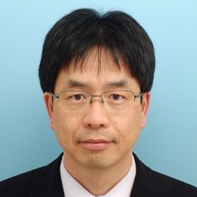Bone and Cartilage Conduction—Volume II
A special issue of Audiology Research (ISSN 2039-4349).
Deadline for manuscript submissions: closed (30 April 2023) | Viewed by 10408
Special Issue Editors
Interests: otology; neurotology; audiology; hearing aid; hearing; implantation; bone conduction, cartilage conduction
Special Issues, Collections and Topics in MDPI journals
Special Issue Information
Dear Colleagues,
Air conduction is major pathway to hear sounds, and utilized for various hearing devices. On the other hand, the application of the other conduction, such as bone and cartilage conductions, has not been as popular as that of air conduction. Recently, the development of the devices has promoted the application of the other conductions in various fields. In the previous Special Issue of “Bone and Cartilage Conduction”, many basic and clinical researches on bone and cartilage conduction have been reported, which made us reconfirm the interesting among the scholars in this field. Particularly, cartilage conduction hearing devices reported in the previous special issue have already been recognized as one of the major hearing devices in Japan. To discover the potentials and to promote the applications of both conductions, we would like to discuss the mechanism and applications of both conductions again.
Dr. Tadashi Nishimura
Dr. Takanori Nishiyama
Guest Editors
Manuscript Submission Information
Manuscripts should be submitted online at www.mdpi.com by registering and logging in to this website. Once you are registered, click here to go to the submission form. Manuscripts can be submitted until the deadline. All submissions that pass pre-check are peer-reviewed. Accepted papers will be published continuously in the journal (as soon as accepted) and will be listed together on the special issue website. Research articles, review articles as well as short communications are invited. For planned papers, a title and short abstract (about 100 words) can be sent to the Editorial Office for announcement on this website.
Submitted manuscripts should not have been published previously, nor be under consideration for publication elsewhere (except conference proceedings papers). All manuscripts are thoroughly refereed through a single-blind peer-review process. A guide for authors and other relevant information for submission of manuscripts is available on the Instructions for Authors page. Audiology Research is an international peer-reviewed open access semimonthly journal published by MDPI.
Please visit the Instructions for Authors page before submitting a manuscript. The Article Processing Charge (APC) for publication in this open access journal is 1400 CHF (Swiss Francs). Submitted papers should be well formatted and use good English. Authors may use MDPI's English editing service prior to publication or during author revisions.
Keywords
- bone conduction
- cartilage conduction
- hearing aid
- hearing device
- implant
- ear
- aural atresia
- otitis media
- conductive hearing loss







